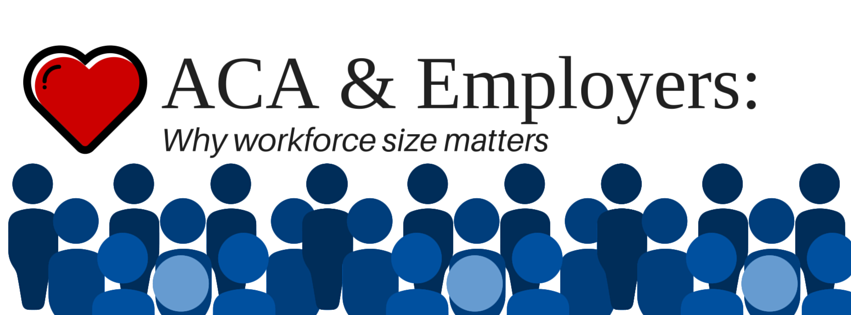The Affordable Care Act (ACA) has several provisions that affect employers’ benefits and requirements. Under ACA, the size and structure of the workforce determines how the law will apply to the employer.
Those who don’t have employees need not worry as ACA would not apply. In all other cases, the employer size is determined on the average number of employees during the previous year. If an employer has more than 50 full-time employees or equivalents, they are considered a large employer, i.e., an ALE (applicable large employer). According to the US Department of Commerce, full-time equivalent employees equal the number of employees on full-time schedules plus the number of employees on part-time schedules converted to a full-time basis. To see all requirements for Applicable Large Employers click here.
Calculating the number of employees is very important for employers with near 50 employees or a fluctuating workforce as it determines the amount of benefits the employer will receive.
Those with 50 or less employees or equivalents may have the option to provide coverage through the Small Business Health Options Program (SHOP) and thus receive additional benefits to be discussed below. These employers are generally considered small unless the employer is a member of an ownership group which is considered an Applicable Large Employer.
Employers with less than 25 full-time employees or equivalents are considered small employers and may be eligible for the health care tax credit to help cover the cost of coverage. To be eligible employers must pay premiums on behalf of employees who are enrolled in a plan offered through a SHOP Marketplace or who qualify for exemption from ACA. Tax-exempt employers also qualify for the credit and additionally have a refund option.
There are still requirements that apply regardless of the workforce size. All employers who provide self-insured health coverage must file an annual report disclosing information for each employee covered in order for the IRS to verify that the individual shared responsibility requirement is met. The first returns have to be filed in 2016 for coverage given in 2015. Note that the required forms to be filed vary by employer type. The correct forms can be found here.
